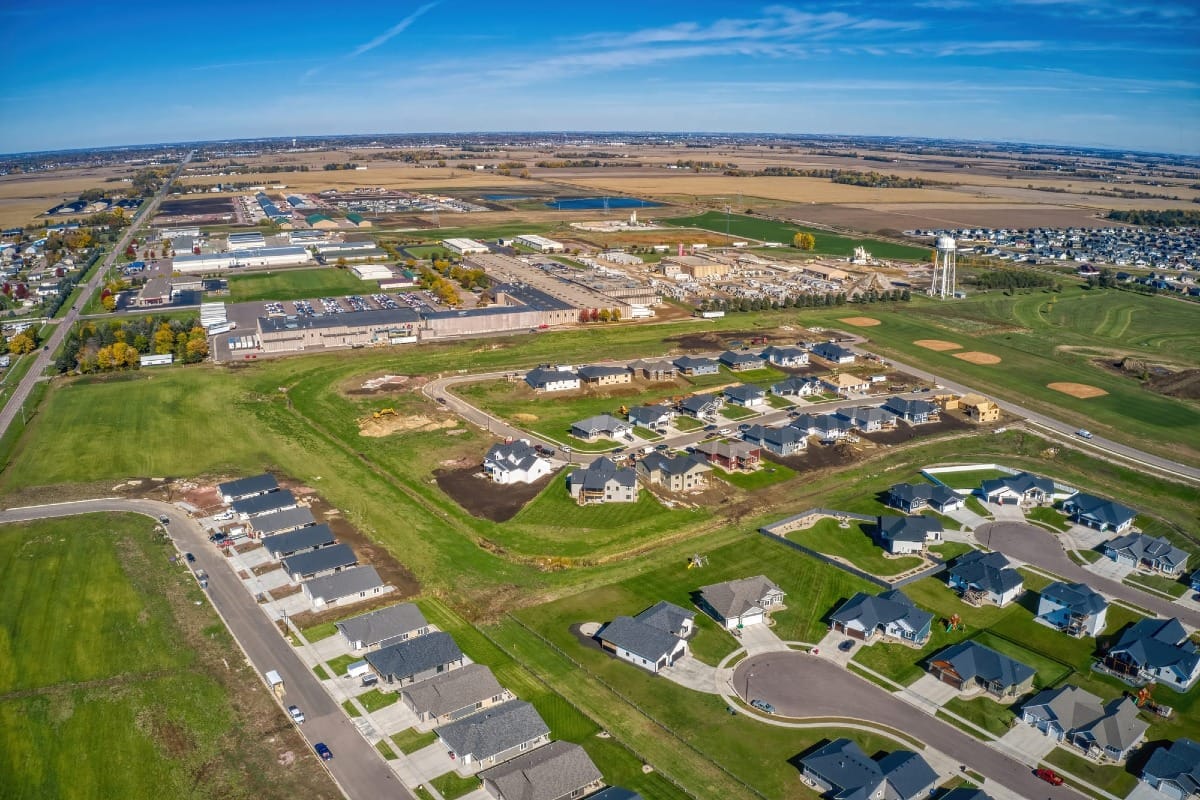
Mariia Novoselia/South Dakota News Watch
HARRISBURG, S.D. – This bedroom community just south of Sioux Falls transformed over the past couple of decades into the fastest-growing South Dakota city of more than 5,000 people, according to the most recent U.S. Census Bureau and Population Division report.
Harrisburg’s population ballooned by 37.8%, or more than 2,500 residents, between July 1, 2020, and July 1, 2023, the report said. Nearby Tea was just behind with 29.9% growth followed by Box Elder, just east of Rapid City, with a 16.2% increase over the time frame.
After teaching first grade for 14 years in Brookings, Julie LeFebvre needed a fresh start and found it in Harrisburg.
“I applied for a job down here, and I got it right away,” LeFebvre said. “With the way that things transitioned so smoothly, I felt like it was meant to be.”
Eighteen cities in the state now have populations of at least 5,000, but not all grew between 2020 and 2023. Brandon, just east of Sioux Falls, saw a slight decrease in its population, as did Aberdeen, Madison, Mitchell, Pierre and Sturgis, the Census said.
South Dakota population unlikely to drop
Despite decreases in some cities, South Dakota’s overall population grew by 8.9%, or almost 72,500 people, from 2010 to 2020, to 886,667, the U.S. Census Bureau said.
Augustana University economics professor David Sorenson used data from the Internal Revenue Service to examine migration into and from South Dakota in his most recent article for the Dakota Institute. According to the piece, in 2020-2021, more than 25,600 people moved between counties within South Dakota.
Additionally, Sorenson wrote that while 23,000 people from South Dakota relocated to a different state, more than 29,000 chose the Mount Rushmore State as their new place of residence, increasing the population by 6,000 and raising the state’s net migration rate to 0.8. The only state in the region with a higher net migration is Montana.
Notably, over the years, Minnesota has contributed the most to migration into South Dakota. Minnesota also seems to have been the state of preference for people looking to move out of South Dakota. In an interview with News Watch, Sorenson said that the Gravity Model, which is similar to Newton’s law of gravitation, can explain this trend.
The attraction between two places depends on their sizes and the distance between them, Sorenson said. With Minnesota being a neighboring state with the largest population in the region, its persistent interaction with South Dakota comes as no surprise.
While Sorenson wrote that “there is no guarantee of favorable continuing patterns” in terms of population spikes in the future, he said it is also unlikely that the number of South Dakotan residents will decrease.
Sorenson said the population in the state may expand further thanks to factors like the natural increase, or the difference between births and deaths, which reached 2,800 in 2023, according to the U.S. Census Bureau.
West River to grow, led by Box Elder
Another South Dakota city seeing a major population surge is Box Elder, where Ellsworth Air Force Base is located.
The U.S. Census Bureau said its population more than quadrupled over the past 30 years, from 2,700 in 1990 to 11,900 in 2020. Rapid growth has continued with the official population listed at almost 13,900 in 2023 and steady growth continuing since then.
The city, which straddles Interstate 90, is poised for even more growth because it was chosen in 2021 as the main base of operations and training location for the Air Force’s new B-21 Raider bomber program.
The B-21 is a $700 million long-range stealth jet with nuclear capabilities that is intended to replace the B-1B Lancer bomber currently based at Ellsworth.
Col. Derek Oakley, commander of the 28th Bomb Wing at Ellsworth, said at a meeting in Rapid City in November 2023 that the Air Force will embark on nearly three dozen individual construction projects on the base at an estimated cost of at least $1.5 billion.
The B-21 program will add more than 4,000 new military personnel, families and civilian workers to the base over the next 20 years, Oakley said.
The Air Force projected in its B-21 Economic Impact Statement that development of the new bomber program at Ellsworth will create nearly 600 local jobs and almost $24 million in local economic impact. Once the bombers arrive, some state officials estimate the program will create an annual benefit of $480 million to the state.
As of February, nearly 300 new housing units were under construction in Box Elder, and the city has seen recent development of new banks, restaurants and other commercial business. It’s also planning to build a $60 million elementary school to further accommodate the anticipated growth.
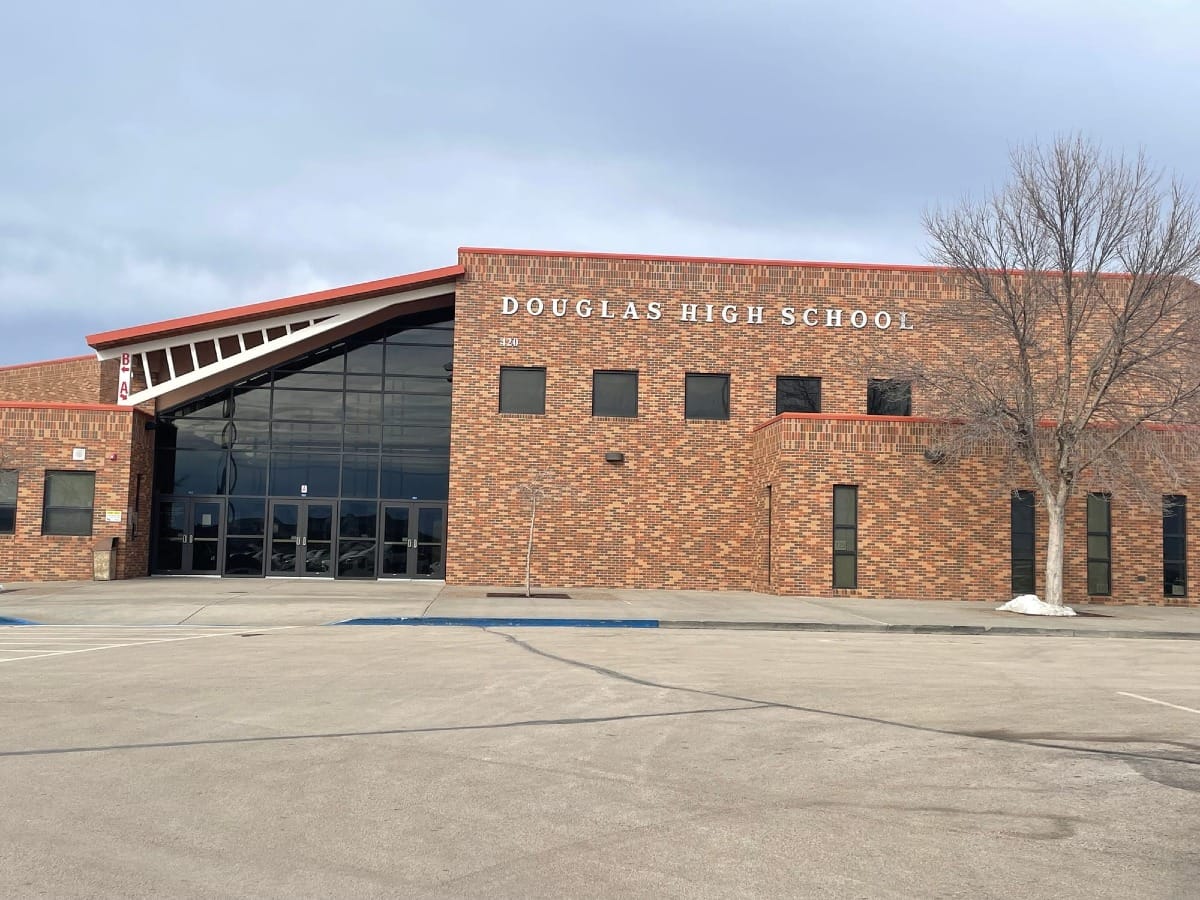
Monument Health of Rapid City is also preparing for population increases in Box Elder by building a pair of new urgent care clinics in or near the city.
The health group said it has begun construction on a primary and emergency care clinic on 2.1 acres near Liberty Plaza. It will also open an urgent care clinic in Rapid Valley, a community southwest of Box Elder, in 2025, according to a news release.
“As the needs of the community grow, including supporting the mission at Ellsworth Air Force Base, Monument Health remains committed to being a trusted partner in ensuring the health and well-being of our neighbors,” said Mark Schulte, Monument Health vice president of operations.
Lincoln County is keeping pace
Lincoln County, which is home to both Harrisburg and Tea, has seen an increase in population too.
According to a U.S. Census Bureau report from March, the county’s population grew by 11.6% from July 1, 2020, to July 1, 2023. In western South Dakota, Custer County and Lawrence County are runners up with increases by 9.4% and 8.5% respectively.
Jim Schmidt has been on the Lincoln County Board of Commissioners for over 25 years. He said when he got the job first, the population of Harrisburg was under 500 people and no one paid much attention to Lincoln County because of how rural it was.
Schmidt said the growth of Sioux Falls fuels population increases in Lincoln County, which is why he believes it is important for the county to be “more of a participant in the future of how the whole (Sioux Falls) area is going to develop.”
A lot of residents have taken issue with a new men’s prison planned for the county because of safety concerns, he said. But many of the people who will work there are likely to relocate to Lincoln County, increasing the population and housing demand, Schmidt said.
COVID-19 leaves a legacy in state
Normally, Harrisburg sells about 14 houses a month, said Brady Daly, director of agent services at Hegg Realtors.
When News Watch spoke with him at the end of May, 64 houses were on the real estate market. This, Daly explained, means that, in theory, it would take about 4 1/2 months to sell all of those houses.
The number of months of inventory can help estimate whether an entity has a seller’s or a buyer’s market.
Historically, a well-balanced market has six months of inventory, Daly said. Anything below that number would be considered a seller’s market where there are fewer houses and more people willing to buy real estate. In a buyer’s market, on the other hand, those willing to purchase some property have more control.
Even though Harrisburg’s 4 1/2 months of inventory means it is still a seller’s market, Daly said it is “aggressively close to a buyer’s market.”
At the same time, Daly said it is tough to find an affordable spot for a first-time homebuyer in Harrisburg. A lot of new construction is “higher-end houses,” which is why they do not sell out as fast, raising the number of months of inventory.
Some of the current demand stems in part from the pandemic, said Harrisburg Mayor Derick Wenck. A significant number of people started moving to South Dakota in 2020, many of them young families, he said.
“People were just fleeing areas where their schools were shut down and everything was closed up. Whereas in South Dakota, we shut down for just a little bit but then opened everything back up,” Wenck said. “We had people that were buying houses sight unseen, and just moved away from everything. It was crazy.”
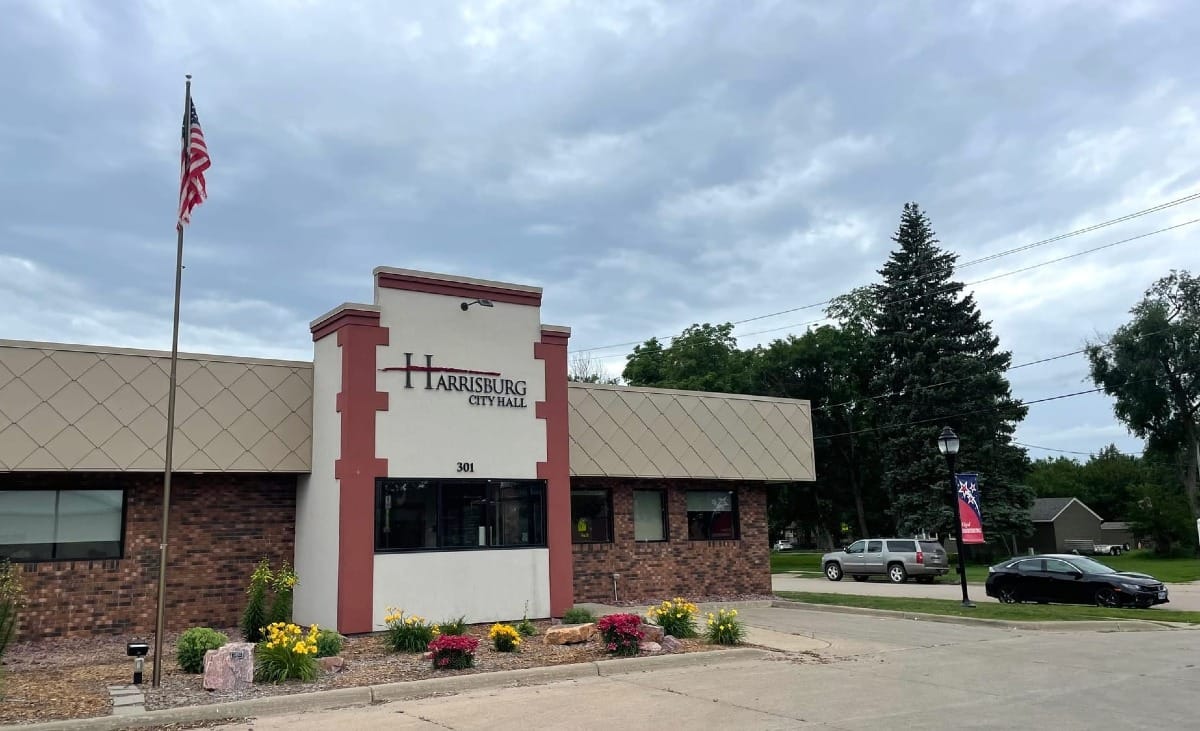
While leading through the first few months of the pandemic was peculiar, soon enough “it was like any other day,” Wenck said. “I felt like we were in a weird area where (COVID-19) was there, but nobody was scared of it.”
Even with the pandemic in the past, Harrisburg’s population continues to grow, and Wenck said there is no sign of it slowing down.
The increasing number of residents has brought a variety of companies to Harrisburg. A coffee shop, a gas station and a hotel are among some of the businesses set to open later this year. One of Wenck’s goals is to attract enough businesses so that people from Harrisburg will not have to go to Sioux Falls to shop.
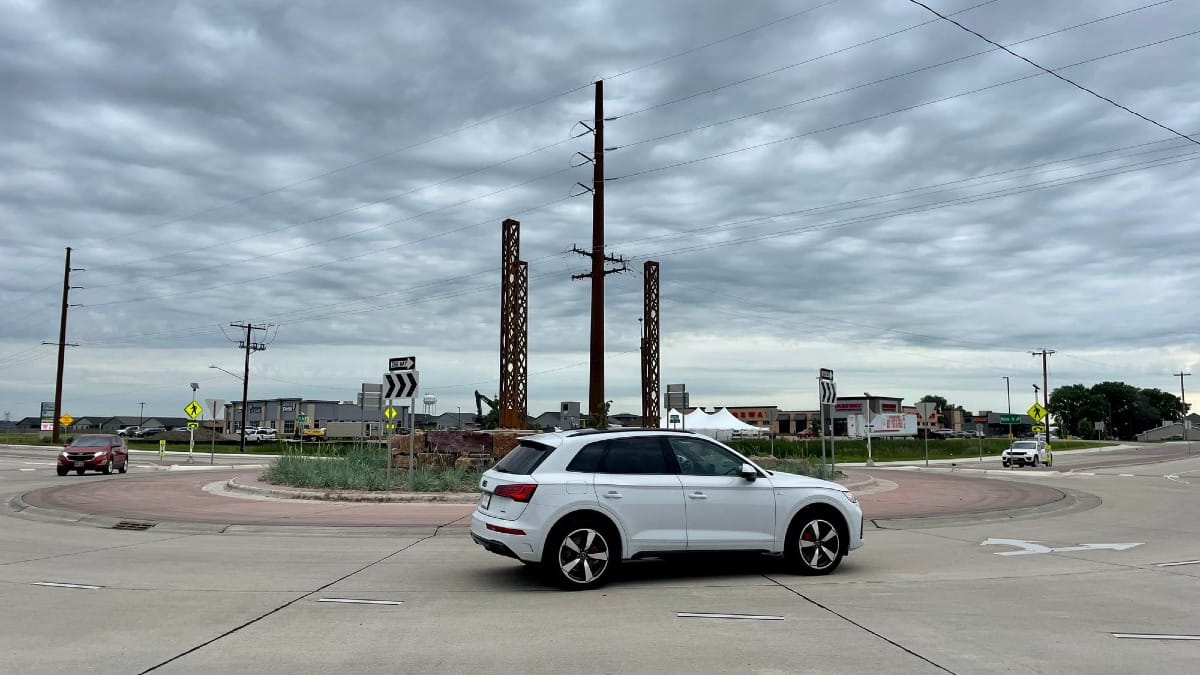
In addition to making Harrisburg appealing to business owners and young families, Wenck said he and his team have been working on Harrisburg’s infrastructure. Last year, the city spent $12 million on enhancements that included sewer line upgrades, paving a mile stretch of a gravel road and installing a roundabout, he said.
This summer, the city plans to invest $10 million in infrastructure improvements, including storm drain projects and more paving, Wenck said.
Harrisburg residents offer a helping hand
Before moving to Harrisburg, LeFebvre did a lot of research about the school district, not only because she wanted to work there but also because she wanted her two children to get a good education.
She had visited the city several times for her children’s activities, such as a trip to the apple orchard or a sporting event. Harrisburg had “some cool features for just a small little town,” LeFebvre concluded.
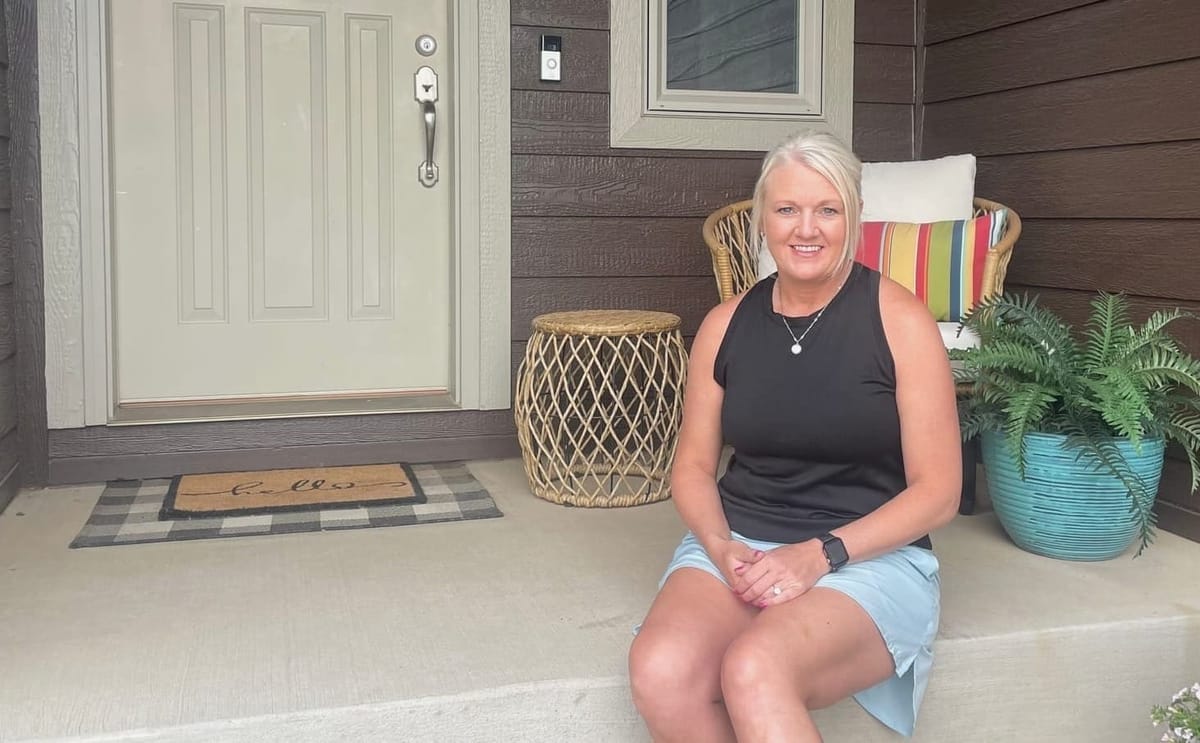
Among them were people’s friendliness and willingness to help. Being “a hop, skip, and a jump away from a big city” is another, she said.
At the same time, LeFebvre said she wishes there were a new family restaurant in town.
“If you ask a typical person, ‘What are they building in Harrisburg?’ They’re gonna say it’s either a gas station or townhomes or apartments. But I understand those things are important too,” LeFebvre said.
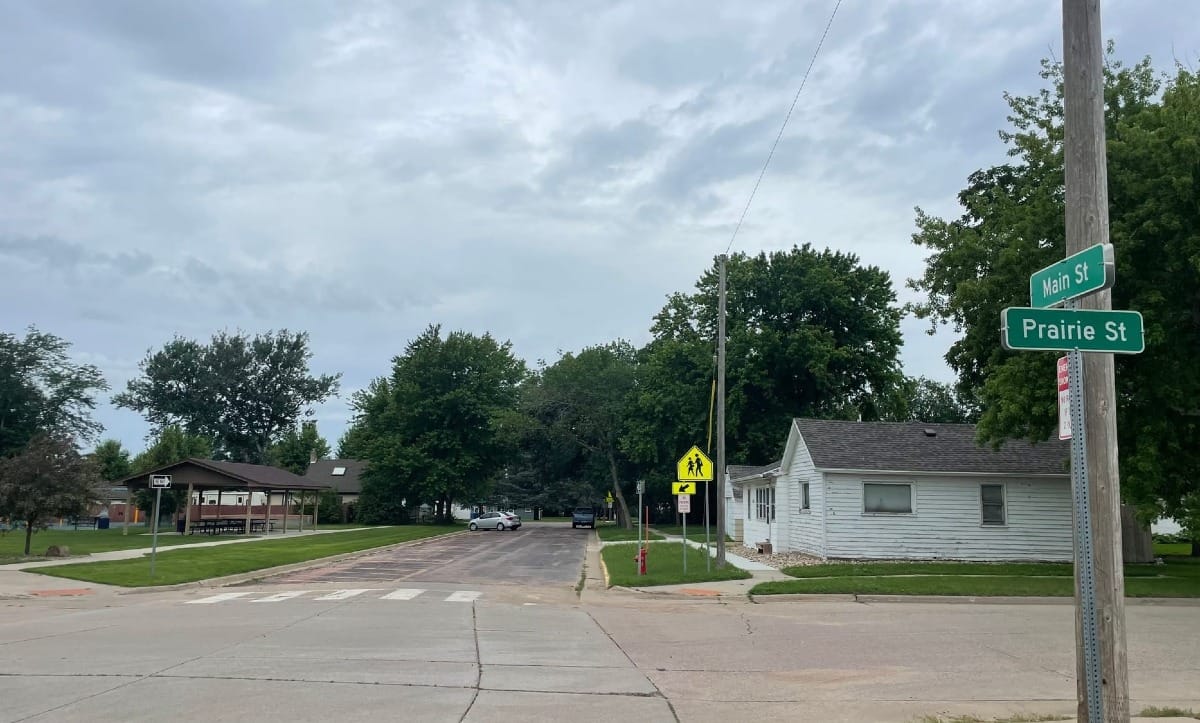
In July 2022, LeFebvre relocated to a bigger house within Harrisburg. This fall, she will start her sixth year teaching first graders in the Harrisburg School District.
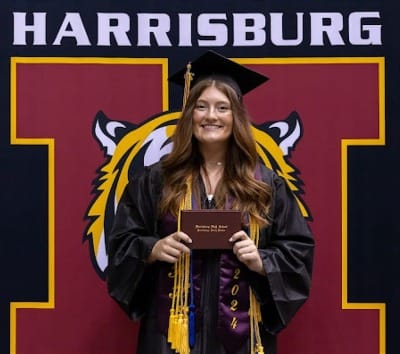
School district appeal transcends city limits
When JoAnne VerMulm, director of communications at the Harrisburg School District, walked in through the doors of the high school for the first time in the fall of 2009, she was surprised by the size of the hallways.
She said they seemed too big for the number of children who studied there. At the time, VerMulm worked as a computer teacher and technology integrationist. She said in addition to teaching classes of her own, her responsibilities included facilitating students and teachers with using technology.
“It was a needed position in our district – just with all of our growth,” VerMulm said.
According to the 2023-2024 Harrisburg School District annual report, the number of students enrolled has been growing steadily since the 2000-2001 academic year.
In the fall of 2023, the count of all enrolled students topped 6,000. Compared to the 2000-2001 academic year, the student body has grown by 674.6%.
VerMulm said when she began working for the school district in 2009, there were 425 high school students. In contrast, last year, there were more than 480 first-year high schoolers alone.
“Now it makes a lot of sense why those hallways were as wide as they were,” VerMulm said. “They were anticipating a lot of growth.”
Two-thirds of Harrisburg students live in Sioux Falls
The Harrisburg School District has been building new facilities “almost every other year,” VerMulm said. This upcoming fall, a new building will replace the old Liberty Elementary School because it has been exceeding its capacity.
“Change is one thing that’s constant in our district because we have experienced growth for the last two decades,” said Tim Graf, who just completed his fifth year as the superintendent of the Harrisburg School District.
Reinventing Liberty Elementary, however, should be the last addition to the school district for the foreseeable future. Graf said that opening new buildings can be “an extra burden on taxpayers,” so the school district has been trying to use the money as efficiently as possible and that the local community has been supportive.
According to the 2022 Recap report from the South Dakota Property Tax Portal, Lincoln County levied $131.8 million in property taxes that year, with schools receiving 62.3% of it.
Data from the report show that Lincoln County ranks third in terms of the amount of money collected. Ahead of it are Pennington County, which levied more than $186 million in 2022, and Minnehaha County, which collected $320 million. Together, the money from these three counties amounted to 41.7% of the $1.5 billion collected in property taxes statewide.
The Harrisburg School District spans seven elementary schools, three middle schools, one high school and a Freshman Academy. Some, like Harrisburg Journey Elementary School, are located within the Sioux Falls city limits.
“A lot of times I get asked: ‘Why have we moved our district into the city of Sioux Falls?'” Graf said. He then explained that school district lines were drawn “generations ago” and the city of Sioux Falls “has just grown into the Harrisburg School District.”
Currently, almost two-thirds of all students in the district live in Sioux Falls, Graf said. This may explain why the number of enrolled students nearly equaled the number of all Harrisburg residents in 2002.
Staffing remains a problem
One of the challenges that Graf said the school district faces is staffing. Despite the ongoing teacher shortage in the state, which was previously reported on by News Watch, Graf said that a bigger problem is finding support staff.
“We’re fortunate in the teacher-regard in that we’re located in the Sioux (Falls) metro area and we’re a pretty progressive school district,” Graf said. At the same time, the proximity creates competition that makes finding supporting staff a challenge.
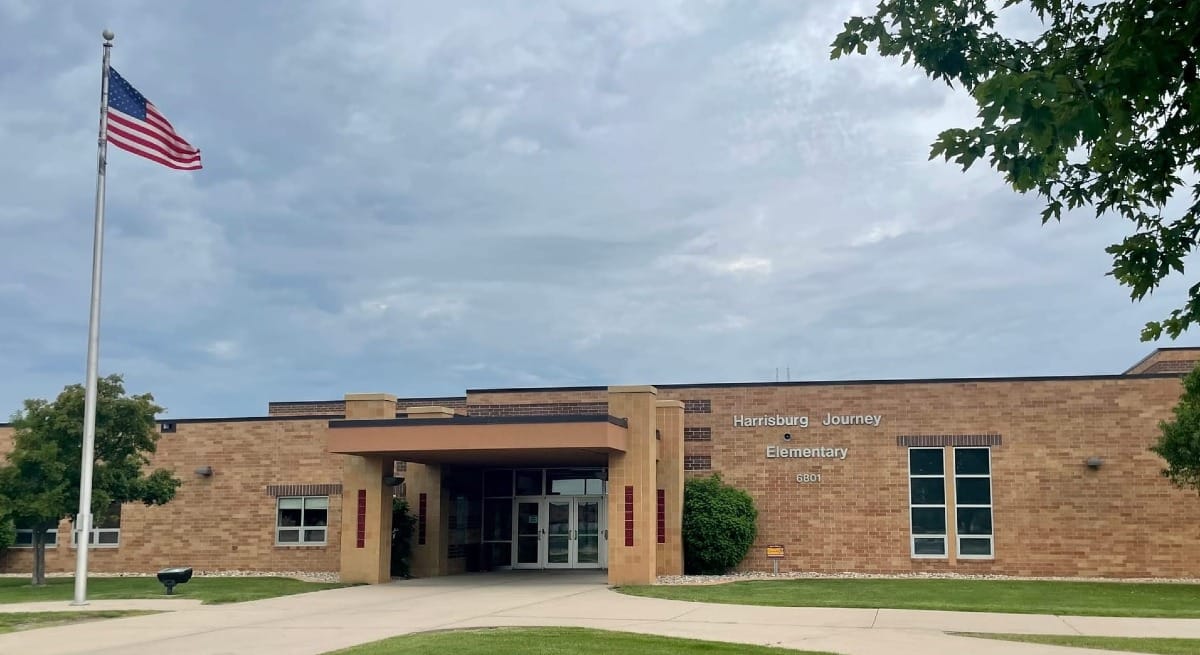
In spite of these and other challenges, Graf remains optimistic.
“With growth comes opportunities, and that has allowed us to be innovative and progressive,” he said. “We have embraced change – that’s been who we are and what we do.”
Born in eastern Iowa, Renee Rebnord moved to South Dakota for college. She lives in Sioux Falls but plans to move in late July to Harrisburg, where she has been working since 1980.
“When I started, I knew every staff member from K through 12 and every kid from seventh grade through 12,” Rebnord said. “Now, when you have almost 500 kids in a class, that’s pretty much impossible to do.”
Rebnord first retired from her job as an English teacher in 2012 but then returned to teach a leadership and service class and substitute for colleagues.
“The students and families of Harrisburg as well as the staff – they’ve always been amazing and supportive,” Rebnord said. “For me, it was a dream job.”
Currently, she works as an administrative assistant in the principal’s office, helping with dual credit registration, appointments, ACT scores and other tasks.
Graf said what makes the Harrisburg School District unique is a variety of personalized learning programs, or pathways. For example, in the 2023-2024 academic year, almost 50 students completed internships with local businesses and organizations. A lot of interns go on to become employees of those companies, he said.
Projections underestimated Harrisburg growth
Originally from the northeast South Dakota town of Gary, Dale Thorpe moved to Harrisburg with his wife and three children in 1971 after living in Minneapolis and Sioux Falls. Thorpe worked in construction and in 1984 joined the Harrisburg School Board.
Thorpe said he spent nine years on the board, and everyone got along. Some issues, however, created disagreement.
“We wanted to build new schools, but the community said, ‘We don’t want to build schools because if we build schools, we are going to grow and we don’t want to grow. We want to be small Harrisburg.’ We said, ‘We don’t have a choice,'” Thorpe recalled.
Years later, Thorpe said the way the community feels about population increases has changed and added that the growth the school board projected was “way less” than what recent U.S. Census Bureau reports show.
“I don’t rub their noses in it, but they know we were right,” he said.
Thorpe has been volunteering for the Chamber of Commerce for over 10 years. He said he likes to know what is going on and meeting new people. Much like LeFebvre, he pointed out that he would like to see a new restaurant in town but added that what appeals to him is how friendly the community is and how safe he feels in town.
“It’s a great place to live in,” Thorpe said. “It’s rural America at as good as it can get.”
